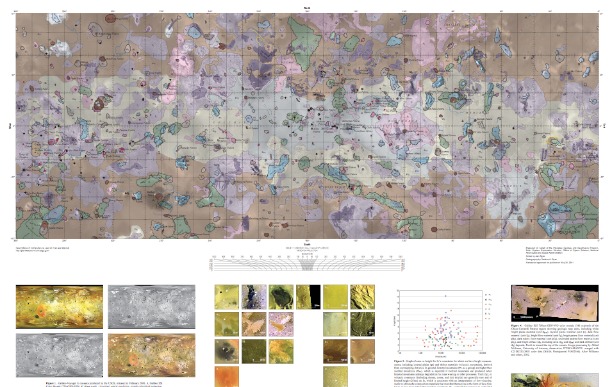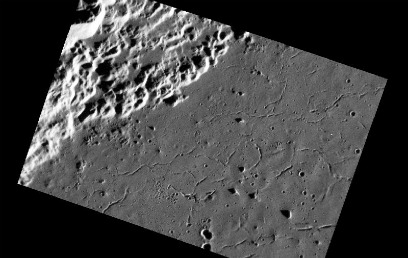Volcanism in Far Places
The Planetary Science Institute has released a new geological map of Jupiter’s moon Io, integrating information taken by the Voyager and Galileo spacecraft.

Part of the new geological map of Io published by the Planetary Science Institute and the U.S. Geological Institute.
Jupiter’s innermost moon, Io, is one of the most fascinating planetary bodies in our solar system — with hundreds of volcanoes, it’s the most geologically active, constantly reshaping its surface. Today a group at the Planetary Science Institute have released a new geological map of the moon, integrating four “global mosaics” produced by the United States Geological Survey in 2006. You can download the whole map here (PDF).
David A. Crown, a senior scientists at PSI, explained in the announcement why this map is special:
This new map of Io’s geology provides for the first time a detailed record of the different types of landforms and deposits that form the surface and presents a global context that is important for understanding Io’s internal evolution and volcanic processes, as well as for targeting future observations of Io. Knowledge of Io’s volcanic activity derived from geologic mapping is an important contribution to our understanding of the nature and diversity of volcanism in our solar system.
What makes the map even more interesting is that it’s based off of information collected mostly from the Voyager and Galileo missions. Yes indeed: spacecraft launched over thirty years ago and currently passing the boundary of our solar system are still giving us new things to think about. The two Voyager spacecraft made their closest approach to Jupiter in 1979, which was when we first discovered that Io was geologically active. Galileo, launched in 1989, deepened our knowledge of the Jovian moon though a number of close fly-bys, observing the effects of volcanic eruptions and imaging the surface to show the sheer extent of the activity.
That we can continue to parse this data to reveal even more about our neighbors is a testament to just how much data these planetary missions can dig up, and how much we still have to learn about our own solar system.

Stresses on Mercury's surface, which may have resulted from the cooling and solidification of either impact melt or volcanic fill. Image Credit: NASA/Johns Hopkins University Applied Physics Laboratory/Carnegie Institution of Washington
On a similar note — that is, space missions “living on” well past their standard mission dates, the MESSENGER spacecraft, in orbit around Mercury, just began its first extension this week. It launched in 2004 and entered Mercury’s orbit on March 18, 2011, with a planned mission end on March 17, 2012. NASA announced last November that the mission would be extended another year. The spacecraft is studying many of the same things at Mercury, including the history of its volcanism and how the planet’s topography has changed. As the team announced last October, they’ve mapped nearly the entire planet and are using it, along with data collected from Mariner 10 in 1974-75, to learn how Mercury was shaped by its volcanic activity.